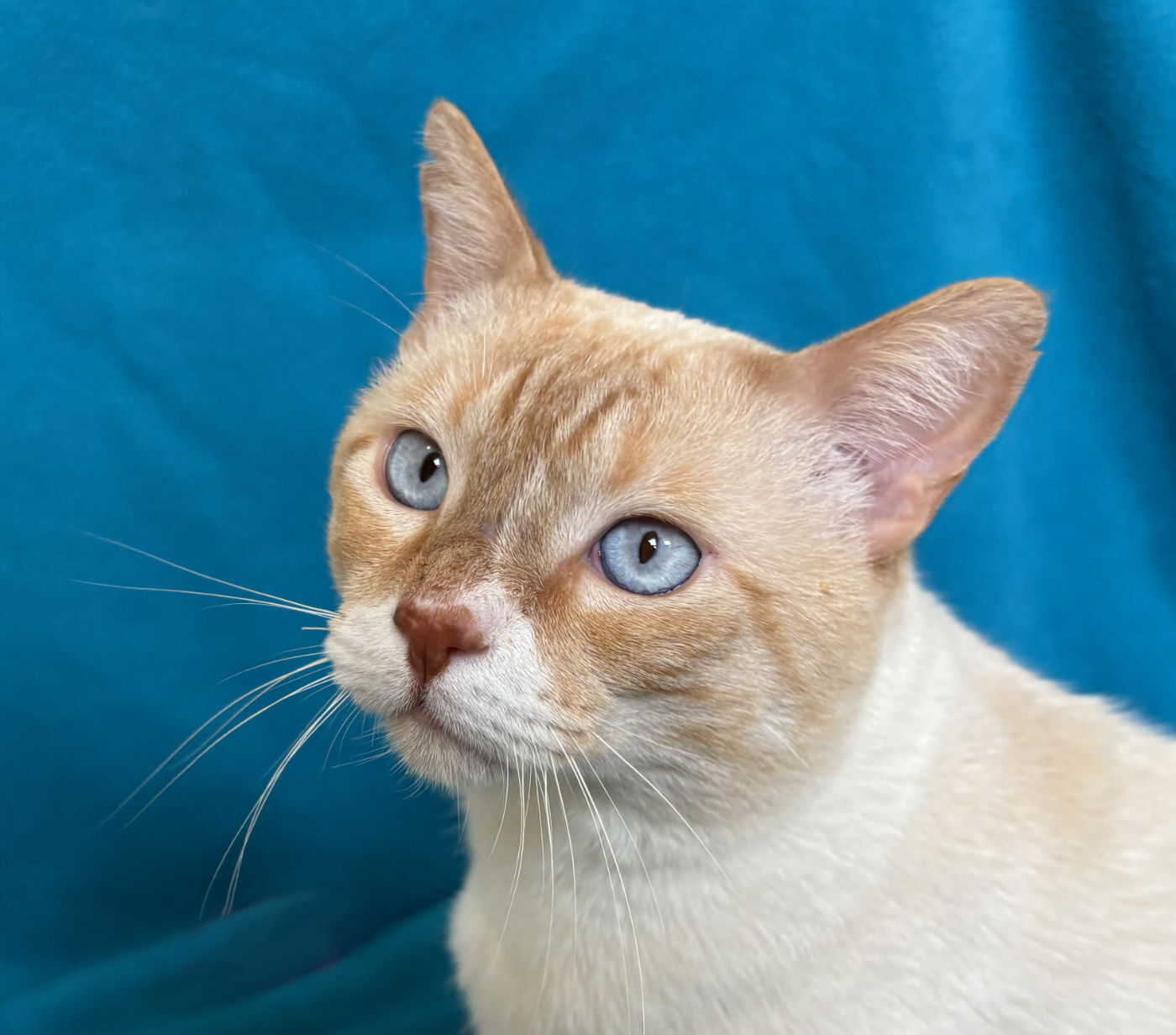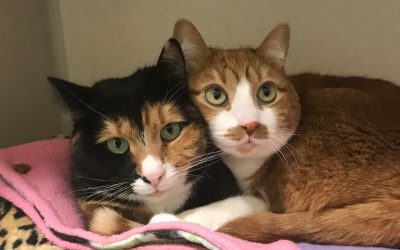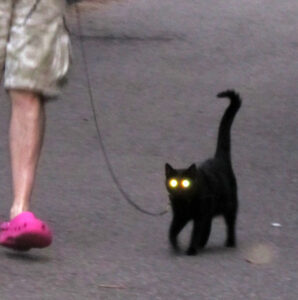
Have you ever wondered what your cat actually sees? Maybe you’ve seen your cat pawing at food or water before he eats or drinks. Or maybe you’ve seen those spooky headlight eyes at night when the light hits their eyes just right.
Cats see the world differently than we humans do. Most of us know that cats see better than us in low light situations. Experts think cats can see about 7 times better than we can in dim light. (Not complete darkness…that’s dark to all of us!)
But it’s also true that cats can’t see objects within about 10 inches very well, like a middle-aged human. That’s why you sometimes see cats touch things before eating or drinking. Their whiskers also give them good information about objects close to their faces.
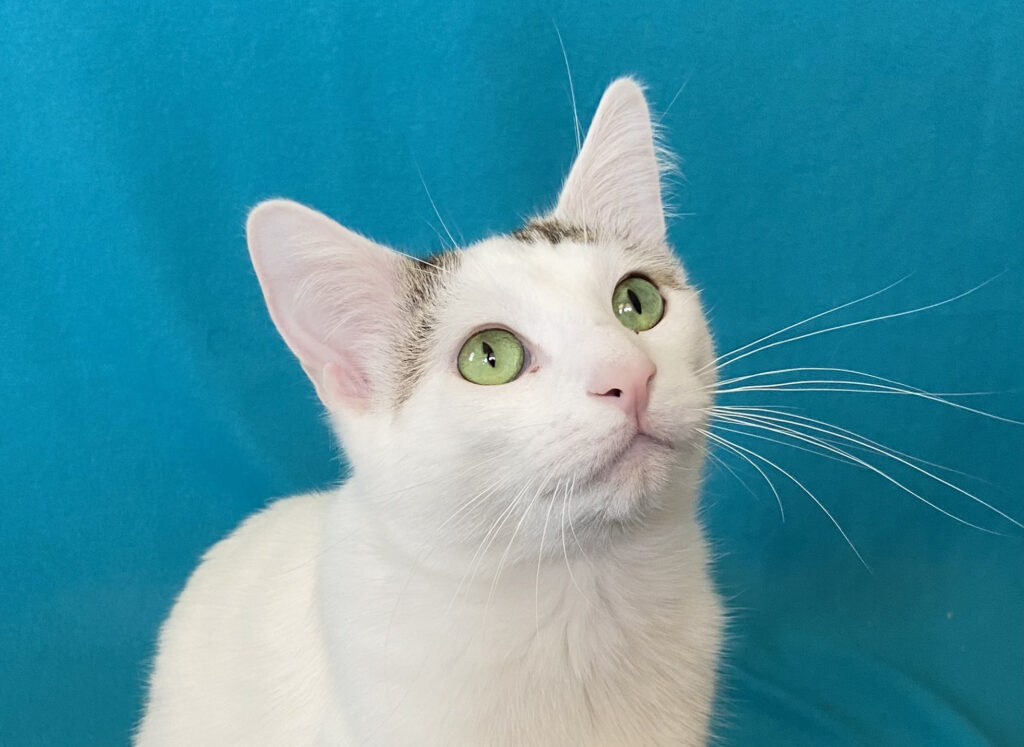
They aren’t exactly farsighted either, with a range of about 20 feet. It’s all about how and where they find food. Cats don’t have the need to spy prey from hundreds of feet away like a hawk, for example.
Hunting needs also dictate the fact that cats can pick up movement faster than we can. Cats are hardwired to see movement in prey, and their bigger corneas and vertical pupils help them do that.
You’ve probably seen a cat’s pupils dilate when he is excited, playing, stressed or having a little ‘nip. Our pupils dilate by a factor of 15 but for cats it’s 135! They are at least ten times better than we are at detecting motion in the daytime.
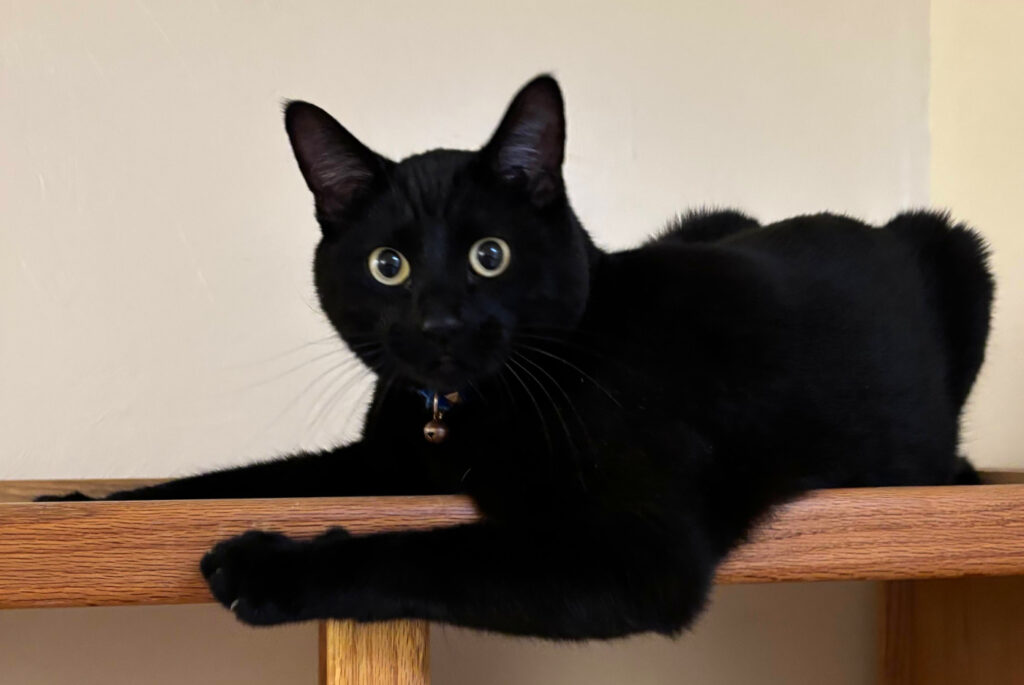
Cats and humans both have rod and cone cells, the photoreceptors in the retina that convert light to vision. Cats have more rod cells, which also help them see better in low light.
We have more cone cells, which help us see color details better and in richer saturation. Compared to humans, cats can see only yellow and blue, not red. This is similar to humans with red-green color blindness.
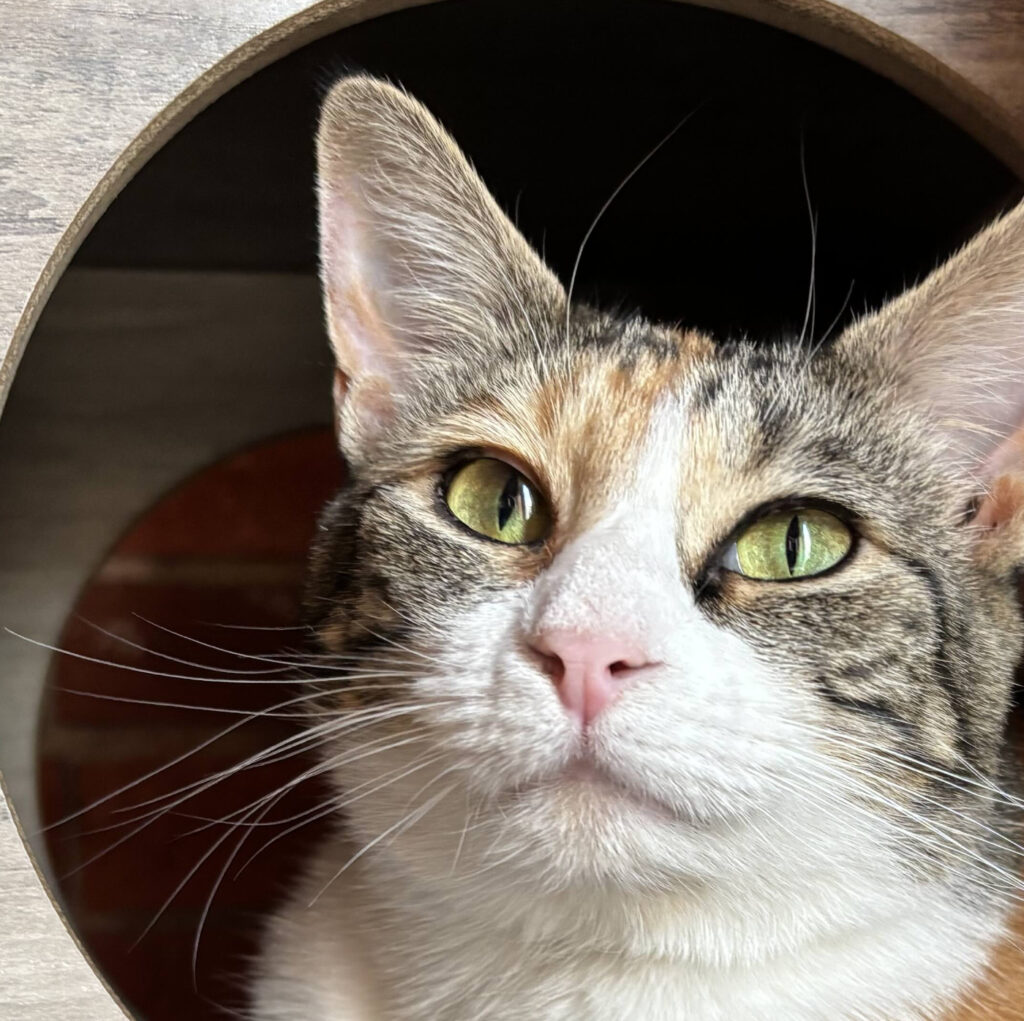
That means red and green may look similar to cats. You may find that your cat prefers blue or yellow cat toys simply because she can see them better.
As cats age, their irises can develop brown or black spots or freckles. This condition is called iris melanosis and while not usually cause for concern, it’s worth having your vet check out during your cat’s annual checkup, if you’re concerned.
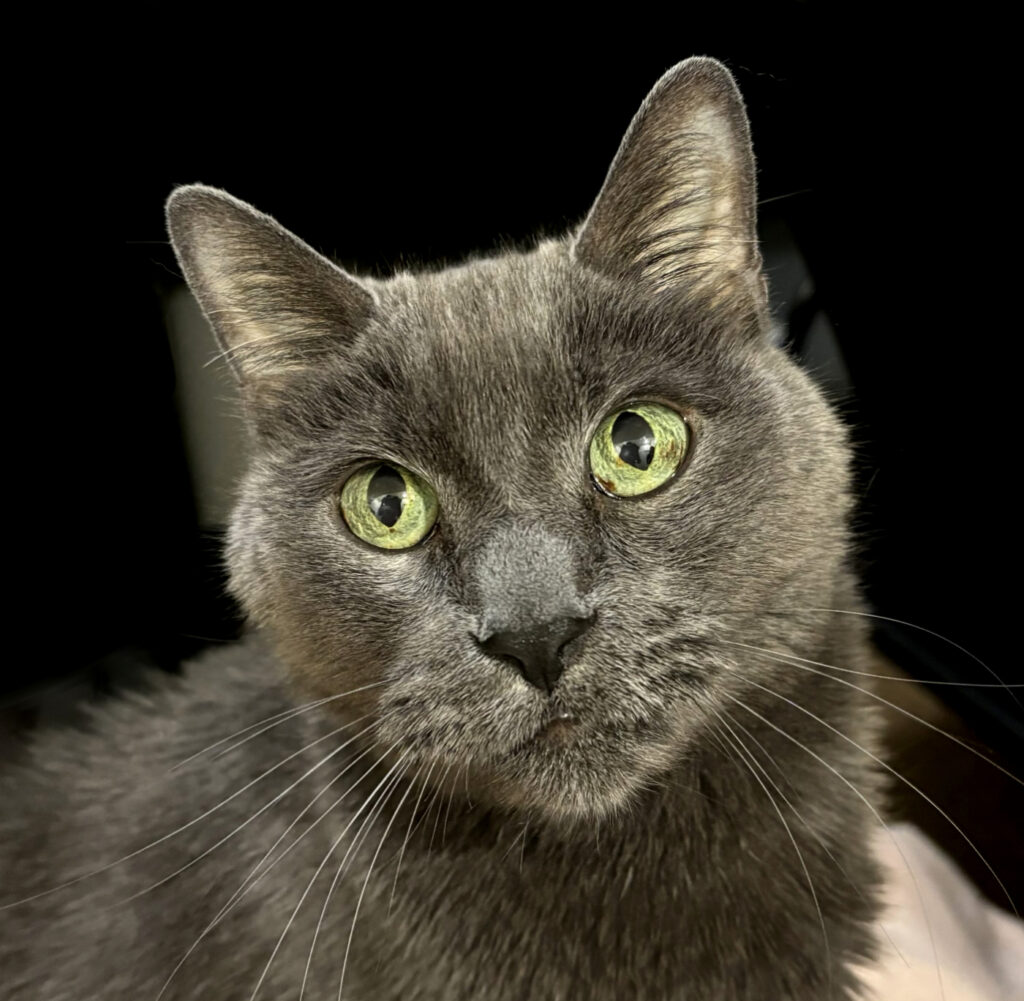
A cat’s pupils can appear more textured and irises lacy, which is not uncommon as he ages. Eyes can also get hazy which can progress to cataracts or even glaucoma, another reason to keep up with those annual checkups.
Cats also have a third eyelid, known as the nictating membrane. You may have seen this thin film come up over Emma’s eye if she’s not feeling well or is stressed. It’s a good indicator that something could be wrong and easy to monitor.
Speaking of stress, did you know that eye shape can also indicate stress? When a cat is squinting or holding his or her eyes shut, that can also be a sign the cat is unhappy (along with many other body language factors, like dilated pupils, flattened ears, tucked tail and pulled-back whiskers). In fact, there’s a Grimace Scale that can help your kitty communicate those needs even better.
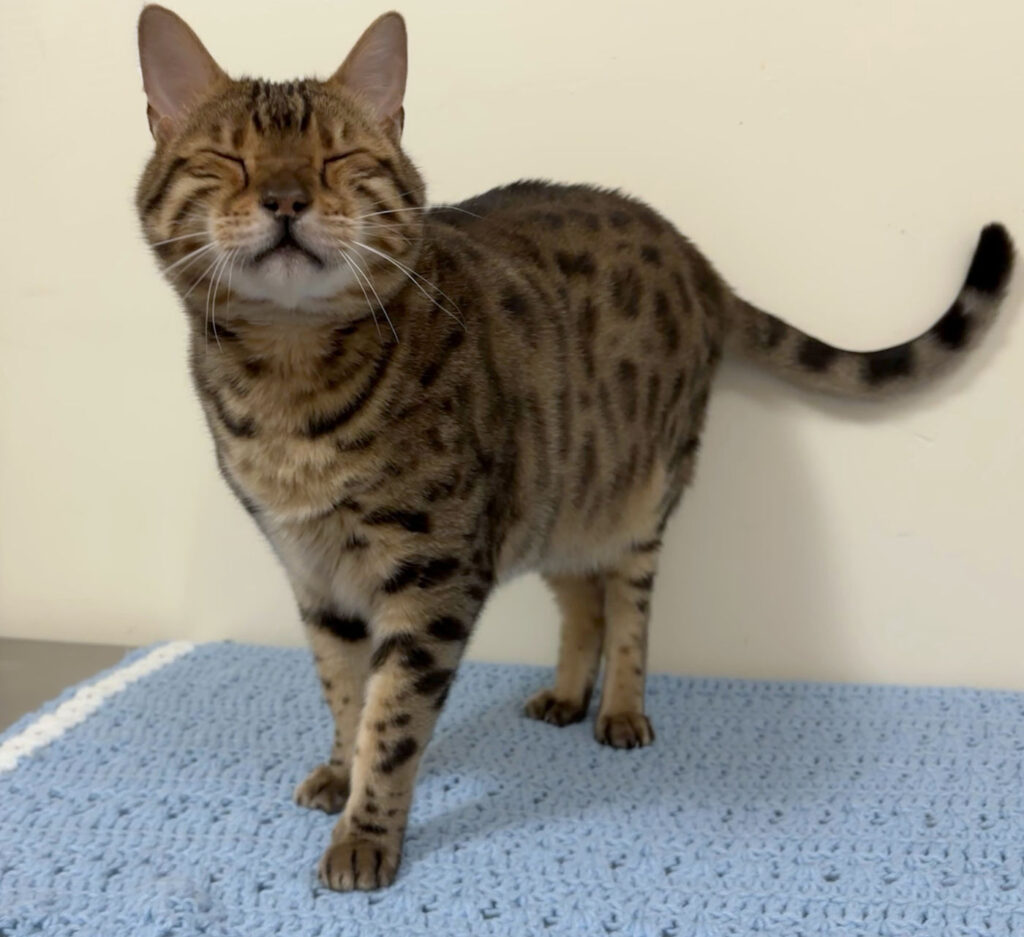
As for those headlight eyes in the dark that some call eyeshine? That’s another feline characteristic called a tapetum lucidum (which fittingly means shining tapestry).
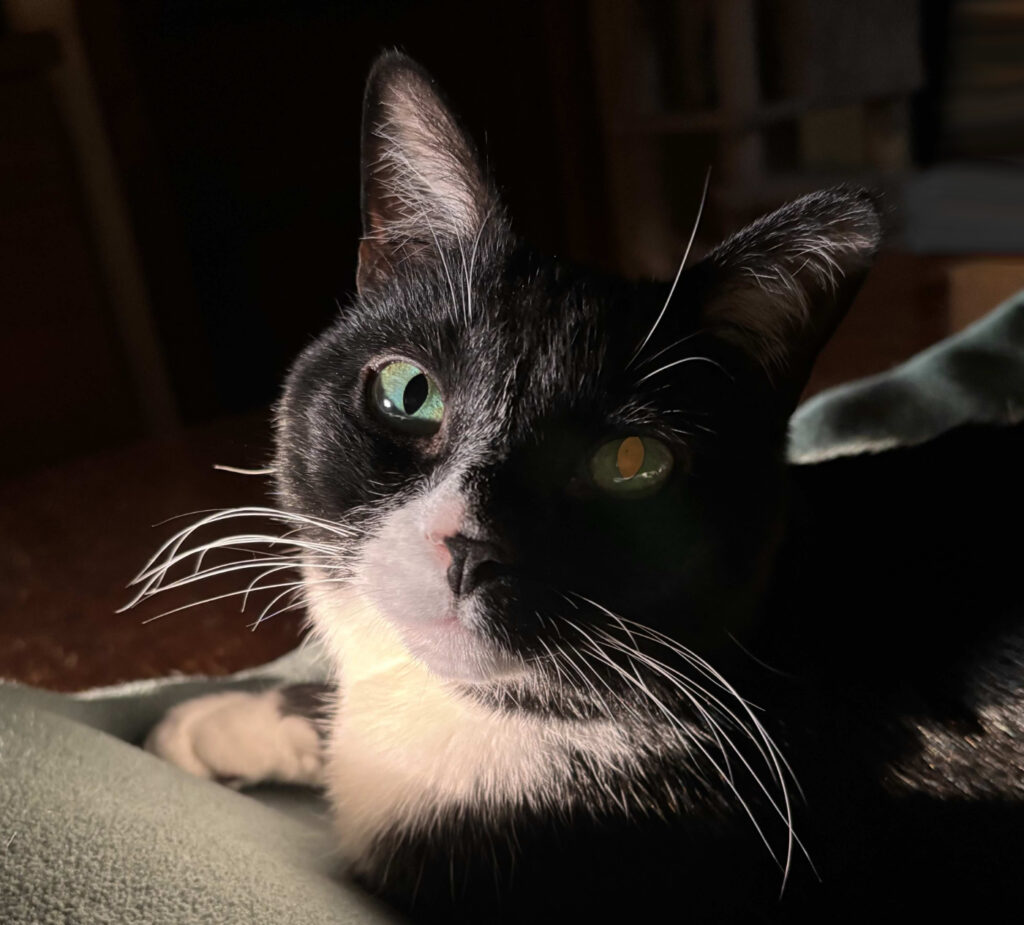
It’s a reflective membrane behind the retina, another advantage that helps cats gather more information in low light…and add to their mystery!
Sara Ferguson is the Director of Happy Cats Haven, where our cats’ eyes keep us on our toes.

